Medical and Wellness Tourism includes traveling nationally or internationally to facilities like hospitals, clinics, Thermae, Thalassa, wellness spas, yoga retreats, Ayurvedic health centers, and wellness resorts. An increase in awareness about wellness has led to an increase in spending on personal wellness thereby making it one of the booming industries in recent times.
What is medical tourism?
Medical tourism is defined as travel primarily for the purpose of receiving health care. Treatments under medical tourism most commonly include dental care, cosmetic surgery, elective surgery, organ transplantation, and fertility treatments. Medical tourism not only deals with providing medical and aesthetic services but also encompasses marketing, patient safety, maintaining hygienic conditions for patient’s betterment, offering medicines as part of the treatment, and procuring organs for transplant, all aimed at a better quality of life.

Medical Tourism is thus a comprehensive industry that partners with various stakeholders in providing the best services. They are:
- Brokers- providing global healthcare arrangements for tourists
- Insurance companies – cover travel expenses and medical complications
- Tourist operators- Take care of travel arrangements
History of Medical Tourism
People have traveled abroad for medical treatments for centuries. But its history can be traced back to the Ancient Greeks who traveled to the sanctuary of healing God to help cure their ailments. For centuries there has been a practice of using mineral springs and herbal medicine in Japan and India. During the Victorian era, people in Europe traveled to Spa towns for hot springs, baths, and other health treatments in Hungary, Austria, and Germany.
5 major reasons for an increase in medical tourism
- High-quality medical care
- Low cost of treatment
- Privatization of healthcare
- Recommendations from family or friends
- To receive a procedure that is not available in their country
What is wellness tourism?
Wellness tourism is defined by the US-based non-profit Global Wellness Institute (GWI) as “travel associated with the pursuit of maintaining or enhancing one’s personal well-being”.
According to GWI, there are also two types of wellness travelers.
- Primary wellness traveler: Those who are motivated to go for a trip solely for the purpose of wellness. So, anyone going to a Yoga retreat or a wellness resort comes under this category.
- Secondary wellness traveler: Those who want to maintain their wellness during a trip, by participating in a wellness activity like a spa or gym.
History of Wellness Tourism
The idea of traveling for the purpose of maintaining well-being is nothing new because its history dates back centuries ago. Let us look at it in brief.
- Ayurveda, one of the oldest holistic systems of well-being from India was supposed to be recorded around 3000 BC.
- Traditional Chinese medicine (TCM) involving approaches like Acupuncture and Tai Chi was developed around 3000-2000 BC
- By 500 BC, Ancient Greek Medicine by Hippocrates gave more importance to the prevention of disease instead of only treating it.
- In the 19th Century, a lot of alternative healthcare methods like Homeopathy, Osteopathy, Chiropractic, and Naturopathy were founded in the USA and Europe.
- In the 1970s, the world’s first wellness center was opened in California followed by organizing the first National Wellness Conference and the setting up of the National Wellness Institute.
- From the 1980s to the 2000s, wellness was brought into the mainstream by workplace wellness programs, the fitness and spa industries, and self-help experts.
21st Century: A turning point in wellness
The 21st century has seen a rise in technological advancement thereby increasing healthcare standards. There is a lot of advancement in the medical and pharmaceutical fields that have considerably increased the human lifespan. This has moreover increased medical costs to a great extent.
However, the current lifestyle and habits of people have led to an increase in chronic diseases and have forced people to deal with lifestyle diseases like obesity, diabetes, sleep disorders, hypertension, asthma, and osteoporosis to name a few.
So, there is a shift towards the prevention of illness and promotion of wellness. There is an inclusion of Integrated medicine departments in most of the elite medical centers to provide holistic well-being.
A Holistic approach to wellness tourism
Wellness is a comprehensive package catering to various aspects of health discussed below.

- Physical: These include a healthy body, nutritious diet, fitness, and beauty.
- Social: A well-developed support system and a sense of belonging define this spectrum.
- Spiritual: Finding a sense of purpose and meaning in one’s life.
- Intellectual: Expanding knowledge and skills and recognizing our creative abilities
- Occupational: Personal satisfaction and enrichment
- Emotional: Developing satisfying relationships and coping with life.
Activities in Wellness tourism
Wellness tourism is defined by activities that offer personal growth, a healthy body and healthy mind, fitness, nutritious cuisine, spa treatments, and outdoor adventures all during vacation time. Let us look at such activities.

Integrative health centers and wellness centers offering
- check-ups
- integrative medicine
- diagnostics
- healthy eating
Organic restaurants and health food stores providing
- weight management
- Detox
- Culinary experiences
Gyms and fitness centers giving
- fitness classes
Adventure parks, wildlife sanctuaries, and nature preserves arrange outdoor activities like
- Hiking
- Biking
- Taking walks
- Nature visits.
Lifestyle and wellness retreats providing
- Life Coaching
- Stress management programs
- reading sessions
- Music and arts.
Yoga retreats, spiritual retreats, and ashrams organizing activities like
- Prayer
- Volunteering
- Me-time
- time with friends and family.
Yoga and martial arts studios offering
- Yoga
- Tai chi
- Qigong
- Biofeedback
Wellness cruises, health resorts, spas, salons, baths, and springs providing
- Massages
- Bathing
- Body treatments
- Facials
- Hair and nails.
Differences in medical and wellness tourism

Source: Global Wellness Institute
Benefits of Medical and Wellness tourism
Medical tourism not only generates revenue for the concerned organizations but also contributes to that country’s economy. Let us discuss some more benefits of medical tourism.
- Development of world-class facilities and health care infrastructure
- Indirect generation of revenue for the airline, hospitality, and local industries
- Improved service quality of healthcare personnel
- Increased career opportunities for health care professionals
- Development of infrastructure of public facilities like roads, railways, parks, gardens, etc.
Wellness tourism
The market for tourism not only encompasses destinations or activities but has become an extension of the values and lifestyle of the traveler. The incorporation of elements of health, self-actualization, and mindfulness has benefitted not just the individual, society, and economy but the whole world. Let us look at the benefits.

- Personal growth of the individual
- Preservation of nature and environment to attract tourists
- Creation of employment opportunities for the local population
- Brings in direct foreign exchange benefits
- Increase in the standard of life of the local residents
- Preserving the culture and tradition of the place
- Chance to travel around the world
The market for Medical and Wellness Tourism
Medical and Wellness Tourism has contributed greatly to the development of tourism across the world.
The Global Wellness Institute formulated to create awareness about wellness has been an authorized and reliable source for information about the wellness industry at large and Wellness tourism. According to the Global Wellness Institute, from 2015 to 2017, the wellness tourism market grew at an annual rate of 6.5 %.

During the Covid pandemic, there was definitely a slowdown in the tourism industry, but the post-covid period has seen a renewed interest in wellness travel. There has been a boom in global interest in overall well-being and how it adds value to one’s life.
There is no doubt that medical and wellness tourism has played an important role in boosting global tourism and accounted for about 18% of the market share in tourism in 2019. Post-pandemic, health and wellness offerings acted as a savior to global tourism by increasing its sustainability and reviving the travel and hospitality industries.
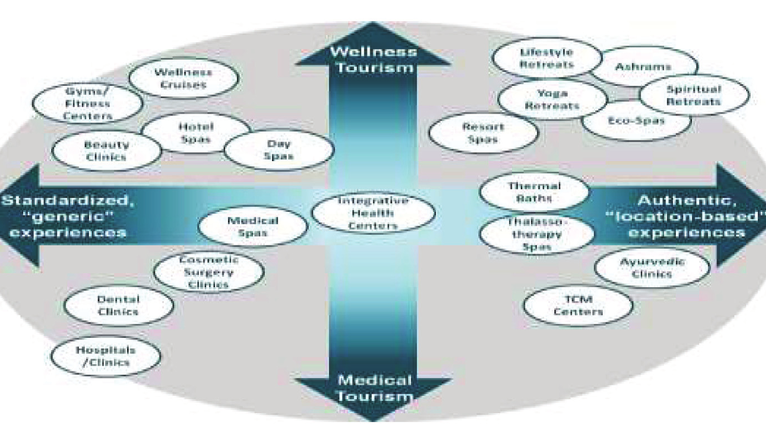
Medical and Wellness Tourism in India
India, being a country with diverse cultures and demographic spread has a wide variety of alternative treatments. This makes it one of the most sought-after destinations for medical and wellness tourists across the world.
According to the Medical Tourism Market Report 2015, India is one of the most promising destinations for medical tourism majorly because of the low cost of healthcare services.

India has state-of-the-art facilities, qualified and reputed doctors, world-class infrastructure, ease of travel, and ease of communication. These are the major factors that attract foreign travelers to opt for medical reasons. The traditional know-how of practices like Yoga, Ayurveda, Homeopathy, Naturopathy, Unani, Siddha yoga, and Panchakarma combined with modern facilities has made India, a popular destination for both wellness travelers and professionals.
The Indian government too has taken various steps to enhance medical tourism by making medical visa processing easy, providing multiple entries, and long stay facilities. Various hospitals have also arranged for interpreters and coordinators to help foreign patients.
Major Wellness destinations in India
Let us discuss below some of the major wellness destinations in India:
- Somatheeram Ayurveda Resort, Kovalam, Kerala- Panchakarma is a set of five ayurvedic therapies that help in cleansing and purification of the body thereby curing ailments like Slipped disc, Psoriasis, Sciatica, and Insomnia.

- Ananda, Rishikesh, Uttarakhand- One of the best luxury spa resorts located at the foothills of the Himalayas specializing in 80 varieties of spa treatments.
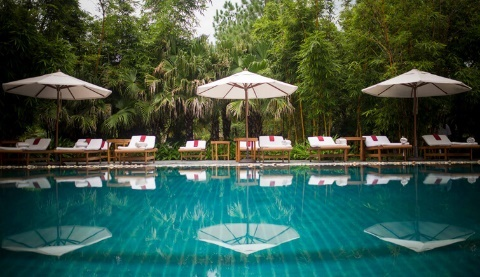
- Ayurvedagram Heritage Wellness Centre, Karnataka-This wellness center located on the outskirts of Bengaluru uses Yoga and Ayurvedic practices to treat people.
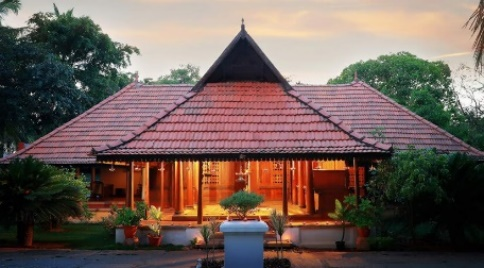
- Atmantan, Pune, Maharashtra– A perfect place for relaxation, rejuvenation, and detoxification. They specialize in Ayurvedic massages, anti-aging facials, acupressure aromatherapy, purifying body wraps, polishes, and Pranic healing.
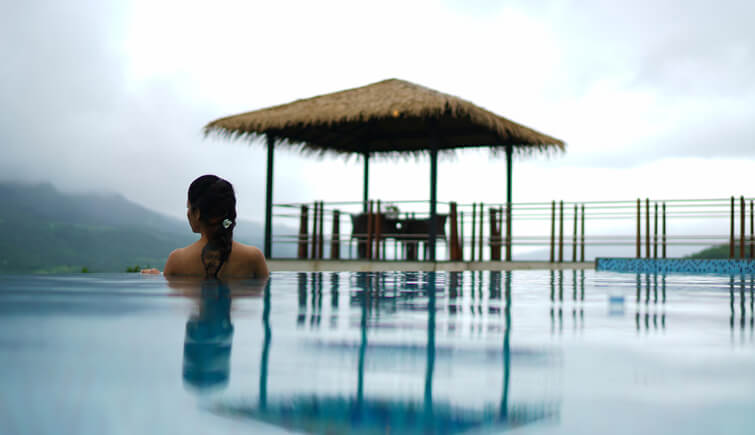
- Nimba Nature Cure, Mehsana, Gujarat– It is one of the best Naturopathy centers in India treating respiratory, gastrointestinal, musculoskeletal, and lifestyle diseases.
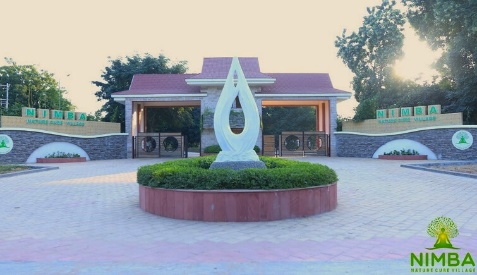
- Devaaya, Goa– It is a popular Nature cure and Ayurvedic center in Goa offering Yoga, Ayurvedic and therapeutic practices.
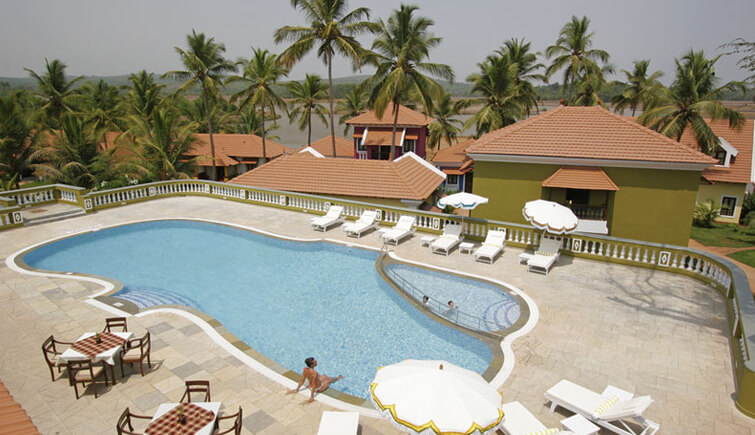
- Amanbagh, Ajabgarh, Rajasthan– It is a sanctuary specializing in Ayurvedic treatments and known to be the wellness heritage of India.

- SwaSwara, Gokarna, Karnataka – A paradise of wellness and art together, SwaSwara is one of its kind, an art resort in India. It’s a beautiful combination of wellness and art to give a holistic experience. It specializes in art yoga, meditation, and ayurvedic treatments.

- Kairali Ayurvedic Healing Village Health Resort, Palakkad – It is one of the “Top Fifty Wellness Meccas in the world” according to the National Geographic Traveler Magazine. It specializes in the use of ayurvedic treatments, ayurvedic oils, Vedic knowledge, ayurvedic diet, and ayurvedic spa equipment.
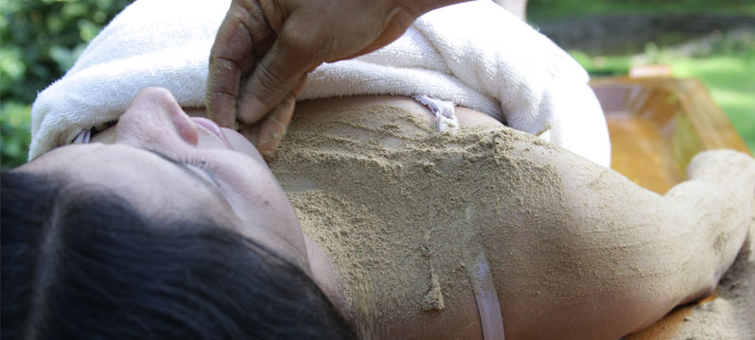
FAQs
- What is wellness tourism?
Ans: Wellness tourism is defined as travel associated with the pursuit of maintaining or enhancing one’s personal well-being.
2. What are the popular wellness tourism destinations in India?
Ans: Some of the popular wellness tourism destinations in India are:
- Somatheeram Ayurveda Resort, Kovalam, Kerala
- Ananda, Rishikesh, Uttarakhand
- Ayurvedagram Heritage Wellness Centre, Karnataka
- Atmantan, Pune, Maharashtra
- Nimba Nature Cure, Mehsana, Gujarat
- Devaaya, Goa
- Amanbagh, Ajabgarh, Rajasthan
- SwaSwara, Gokarna, Karnataka
- Kairali Ayurvedic Healing Village Health Resort, Palakkad
- What are the reasons for an increase in medical tourism?
Ans: The reasons for an increase in medical tourism are:
- High-quality medical care
- Low cost of treatment
- Privatization of healthcare
- Recommendations from family or friends
- To receive a procedure that is not available in their country
